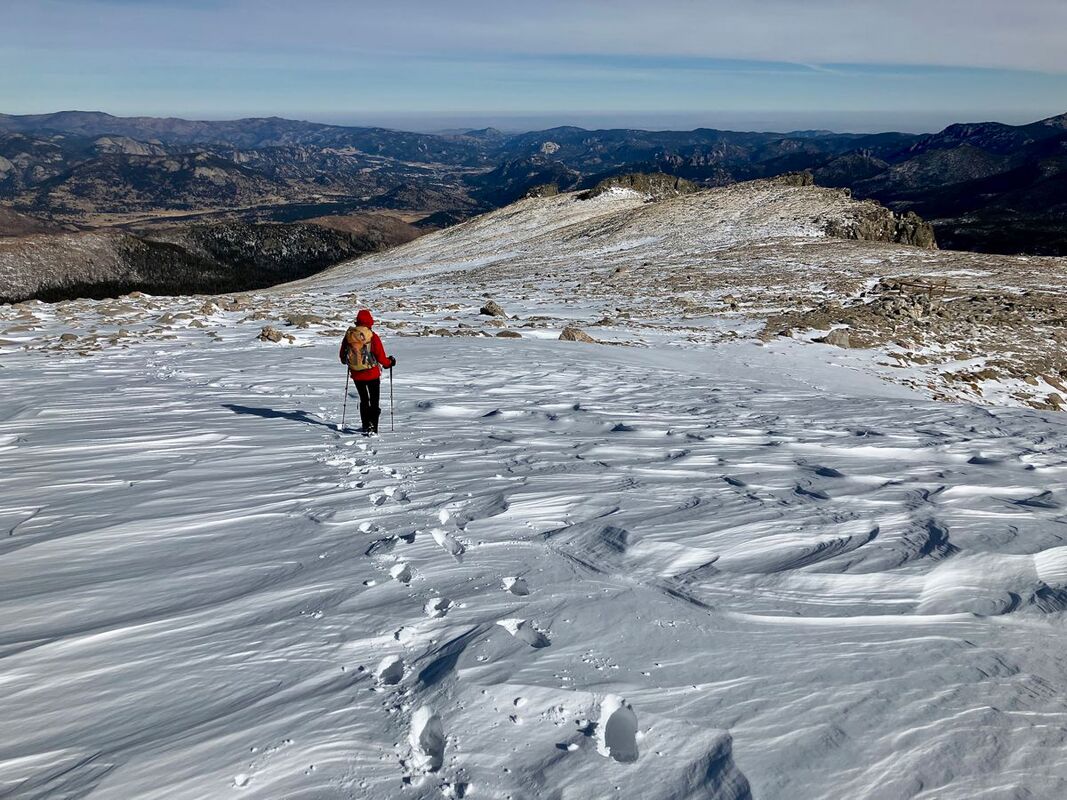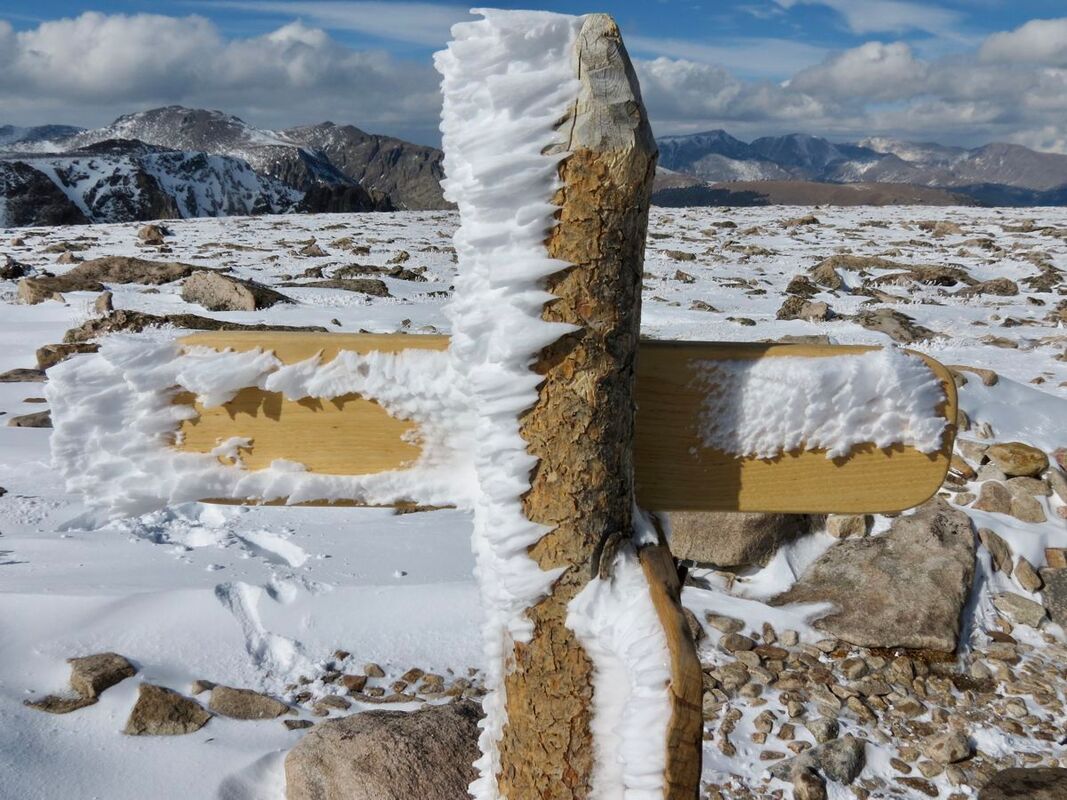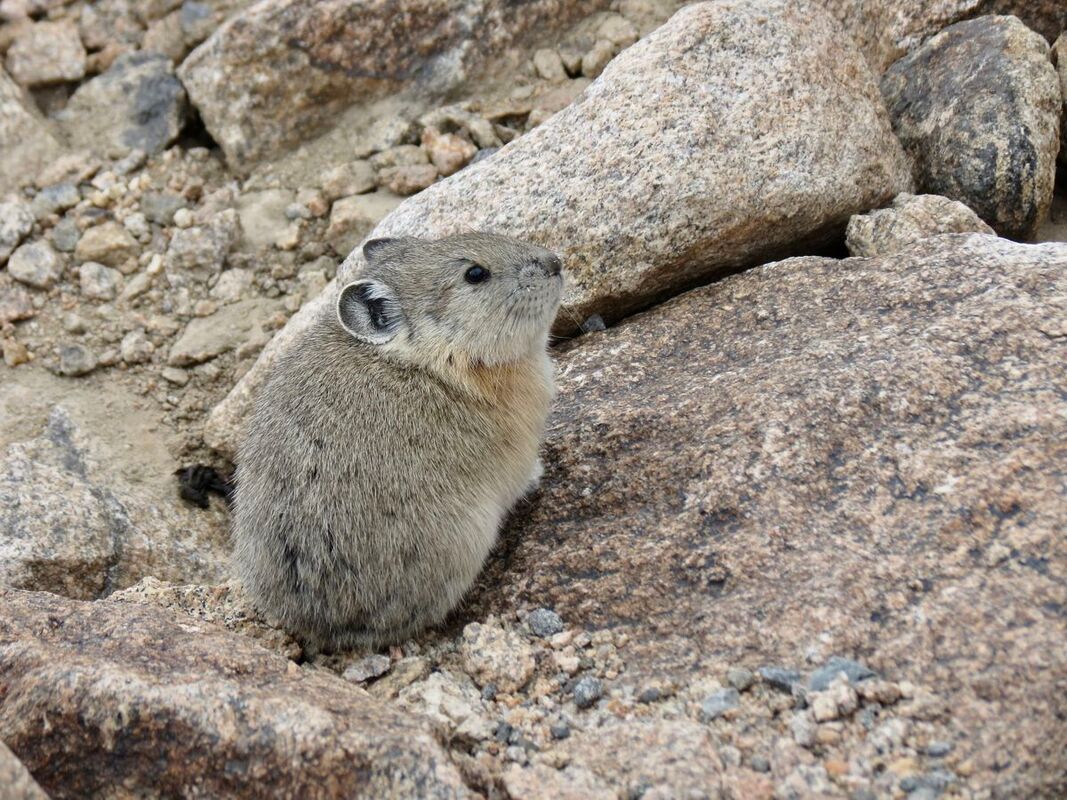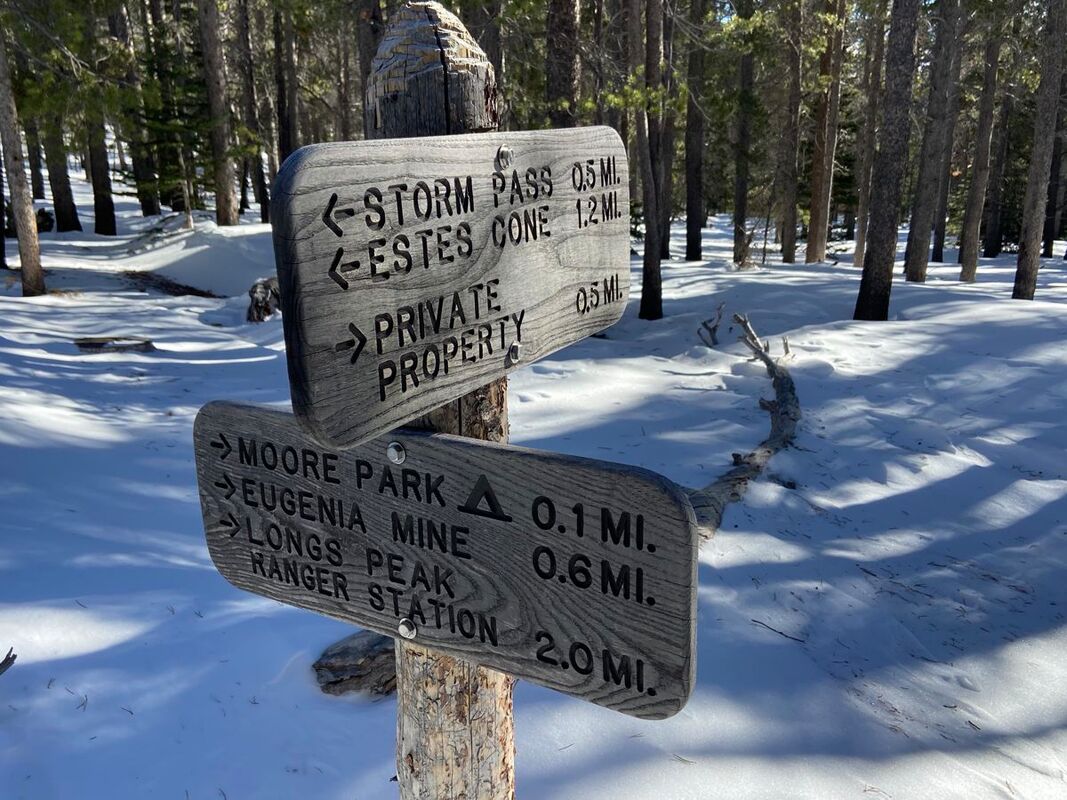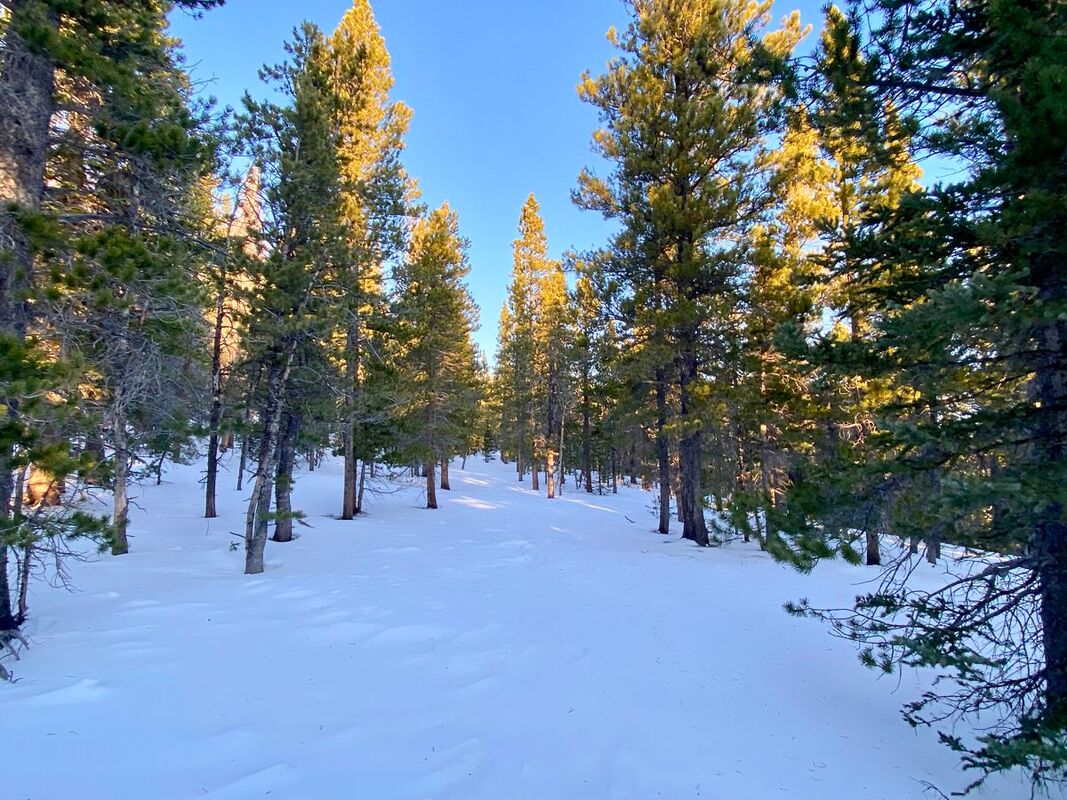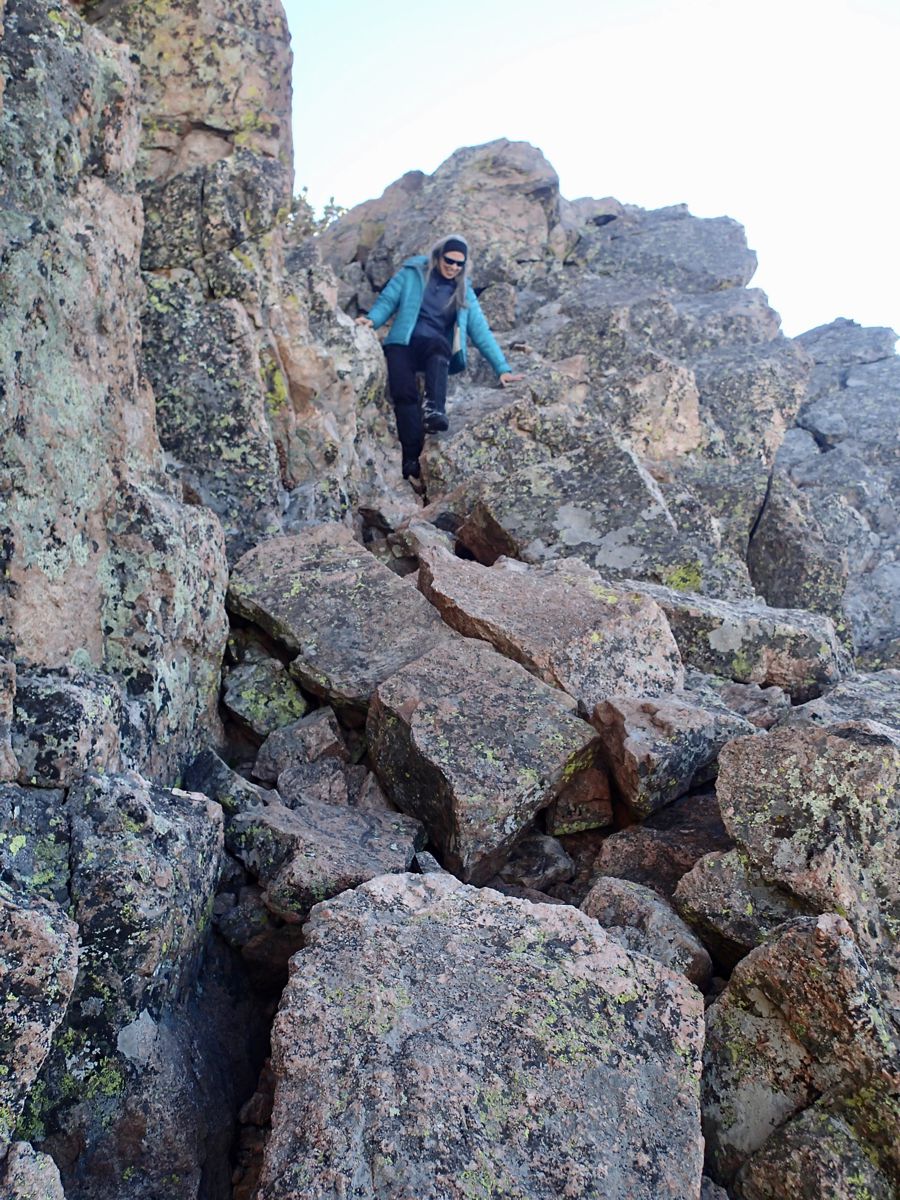|
Story and photos by Marlene Borneman While winter officially begins with the Winter Solstice, Rocky Mountain National Park can dish out harsh winter conditions as early as October! Being out in the winter months over the years has taught me to prepare for the unexpected. Frostbite and hypothermia are real risks when traveling in the Colorado backcountry this time of year. Hikers should be sure to check the forecast before heading out. I carry spikes, snowshoes, and layers of clothing to be sure I am ready for the ever- changing conditions. I have come to appreciate Rocky in chilly, snowy and yes, even windy conditions. The landscape is transformed to a peaceful, awe-inspiring, and captivating space to recreate or just to pause. Snow glistens like scattered glitter and icy streams create fine art. The seed pods of common plants are a challenge to identify in their winter form. Lucky hikers may spot a snowshoe hare, ptarmigan or ermine in white winter camouflage. Winter offers so much to observe, learn, and wonder about. Flattop Mountain and Estes Cone have been two of my favorite winter hiking destinations for many years. These trips can range from relatively straightforward to very challenging, depending on weather and trail conditions. Flattop Mountain has given me the extremes. The summit is 12,324 feet in elevation and the starting point at Bear Lake is 9,450 feet. In those 2,894 feet of elevation difference, both the weather and trail conditions can rapidly change in winter. A 2021 winter day started out cold, but not bitter. As I climbed higher the winds became stronger, temperatures dropped to the 20s (not including the wind chill factor) and enough snow covered the trail to require the use of snowshoes. 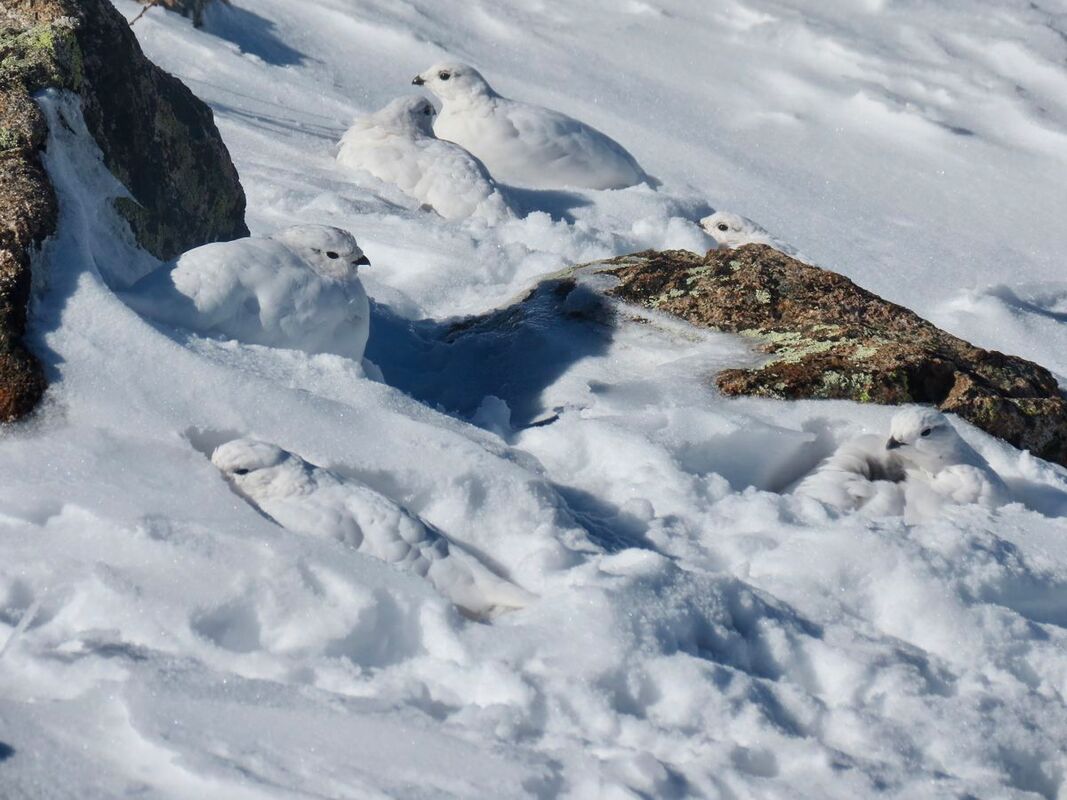 On a windy, winter day in 2021, the author encountered a covey of white-tailed ptarmigan in their winter plumage. On a windy, winter day in 2021, the author encountered a covey of white-tailed ptarmigan in their winter plumage. Due to the wicked winds up above 12,000 feet, I turned around. But the day was not a loss. On the descent I heard a faint cackling sound which I quickly recognized as a ptarmigan call. Rocky is home to white-tailed ptarmigans which live in the alpine during summer months and go down the to sub-alpine levels in winter, where they can feed on willows at the edges of snowfields. It took me a minute searching the landscape to spot a tiny dark spot in the snow, the eye of a ptarmigan. Soon I saw not one, but about a dozen ptarmigans huddled together sharing their warmth in a snowbank. This sighting made me forget the wind and cold at least momentarily. In contrast, January 5, 2018, was windless and sunny, with mild temperatures and little snow on the trail, requiring only micro-spikes. It was a very pleasant day to be on Flattop. The American Pika was scurrying between the boulders, possibly trying to soak up the “warmth” of this winter day. Pikas do not hibernate as marmots do, but it is still unusual to see them in the dead of winter frolicking around. They often stay near their “haypile” hidden under rocks as most of the plants are buried in snow. On other winter trips on Flattop trail I have caught sightings of dusty grouse and, lower on the trail, turkeys. Estes Cone stands at 11,006 feet, not quite above treeline. Starting at the Longs Peak Trailhead at 9,400 feet, there is often enough snow to wear snowshoes from the start but if not, I carry a pair because up higher, they may come in handy. Soon I reach the junction for Eugenia Mine which is an abandoned gold mine from the early 1900s. Now all that remains are a few timbers from cabins, rusty pots, and tools which are now buried under winter snow. The wide meadow ahead is called Moore Park and is often wind-scoured, resulting in an icy trail. A few winters ago, I spotted a snowshoe hare in winter white along this section. A second junction marks the way to Storm Pass. It is only .7 mile to the summit from Storm Pass; however, the trail becomes gnarly from here. Hikers can anticipate steep, rocky terrain through a tangle of forest. Sometimes I have been able to keep snowshoes on if the snow cover is good, otherwise spikes are the best tool to climb up this arduous section. Below the summit a steep gully, often filled with ice and snow, awaits the hiker, making it a tricky climb to the top. The route flattens out before climbing up to a hefty rock outcropping where the summit rests. Winter months often bring high winds to the top of Estes Cone making the summit stop brief. Despite the wind and cold the summit offers tremendous views in every direction. To the east lay Twin Sisters Peaks, Lily Lake and Lake Estes. Longs Peak Massif rises to the west along with the peaks of the continental divide. The Mummy Range dominates the view to the north. This impressive panoramic view makes every frosty step toward this accomplishment worthwhile. On December 11, 2022, I attempted Estes Cone on a day when high winds caused the snow to form deep layers of crusty snow. Snowshoes were more of a hindrance than a support. The crust would break through in slabs causing the snowshoe to sink. I only made it to Storm Pass that day. In those snow conditions my day was done. I sat a long time at Storm Pass in the still cold, crisp air just taking in this vast wilderness. Not a bad day at all. 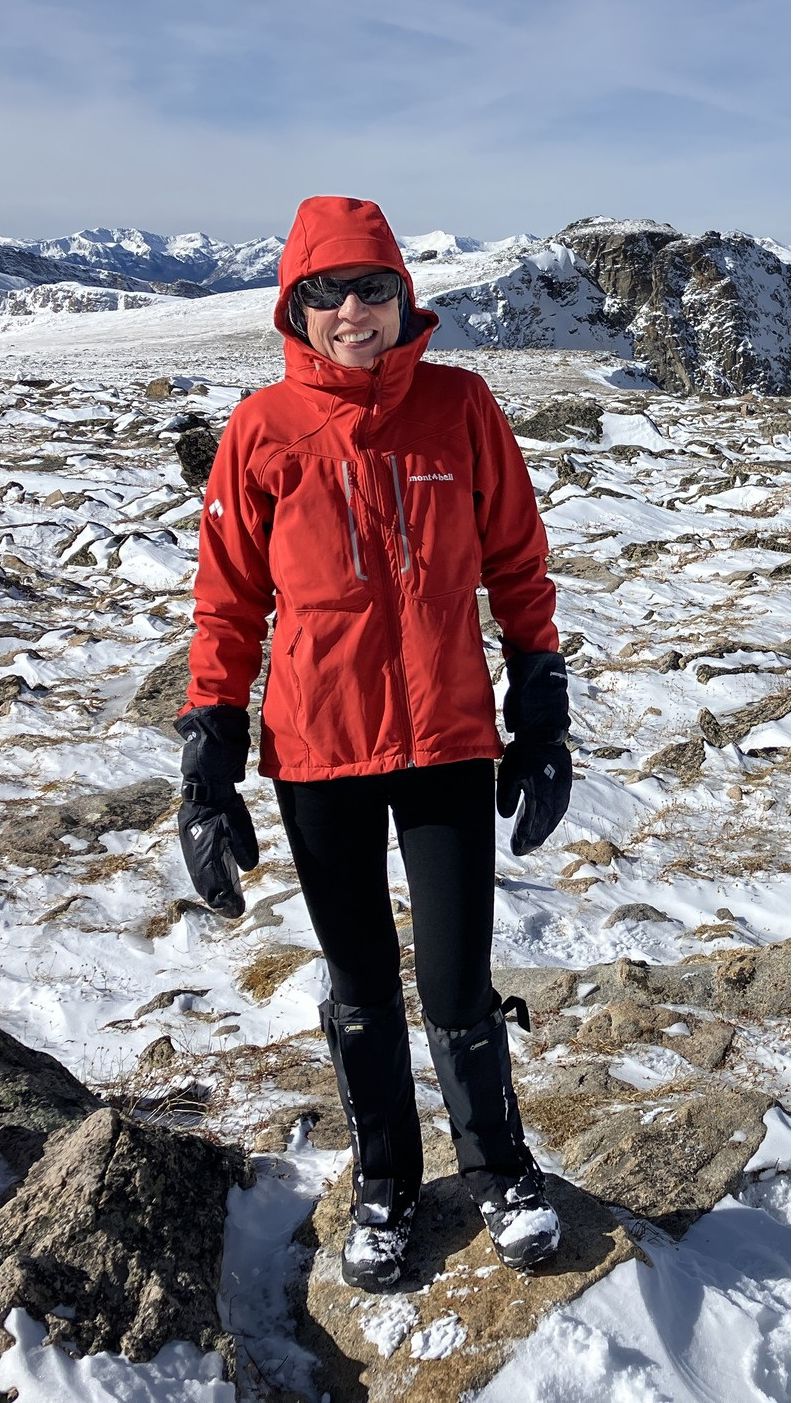 Marlene has been photographing Colorado's wildflowers while on her hiking and climbing adventures since 1974. Marlene has climbed Colorado's 54 14ers and the 126 USGS named peaks in Rocky. She is the author of Rocky Mountain Wildflowers 2nd Ed, The Best Front Range Wildflower Hikes, and Rocky Mountain Alpine Flowers. This week's free story is brought to you by Snowy Peaks Winery and Xplorer Maps.
0 Comments
Leave a Reply. |
Categories
All
|
© Copyright 2025 Barefoot Publications, All Rights Reserved

